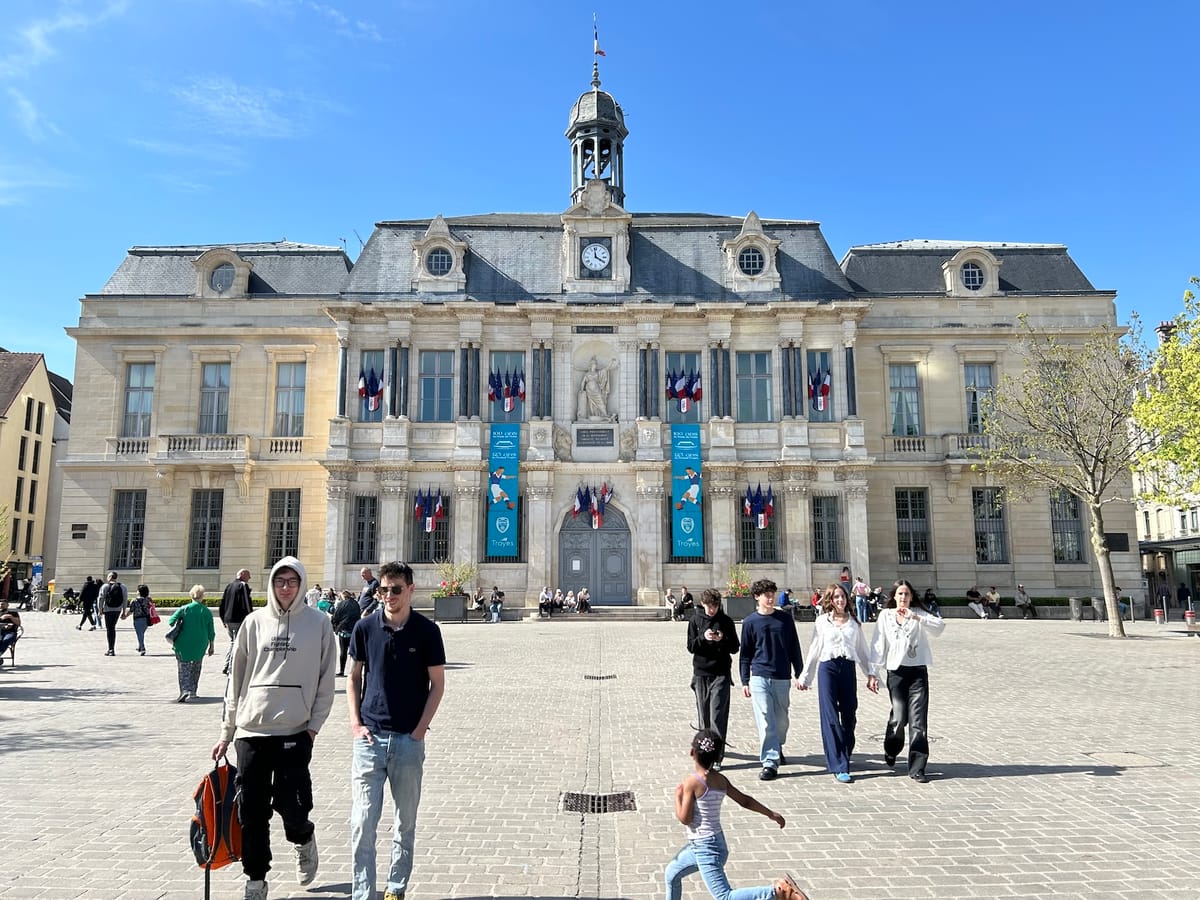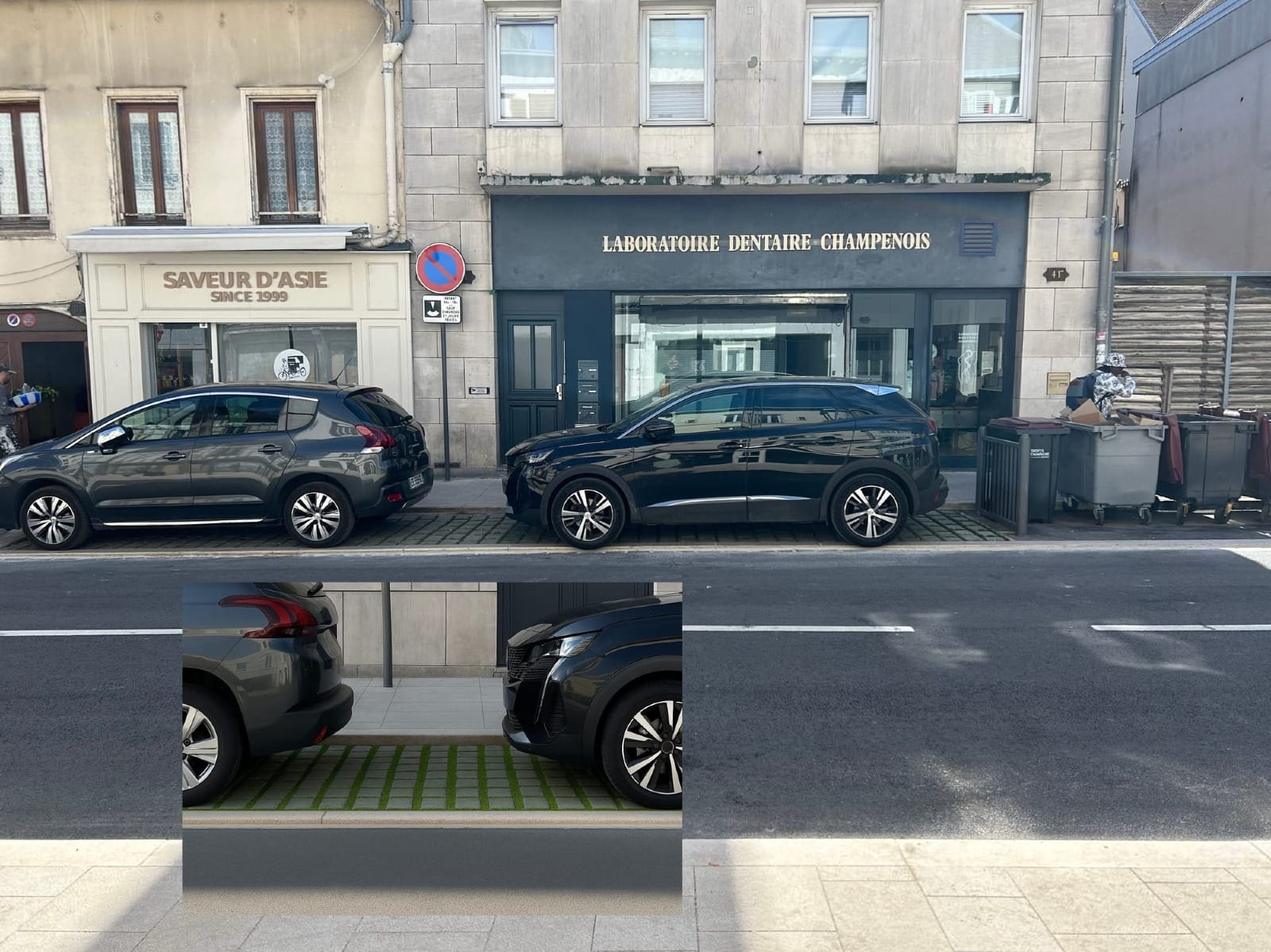Is that a sponge under your car?

Last week I visited Troyes, France—a small city about two hours from Paris in the Champagne region. It’s known for its medieval town center and the world’s largest collection of European hand tools.
When others look to the stars for inspiration, I often look down at the ground. Streets tell you how a city thinks. What I immediately noticed was that Troyes is updating their street parking to absorb rainwater. It looks like this:

Yes, that's grass growing between the pavers! Permeable surfaces are important because they allow rainwater to be absorbed directly into the ground. Otherwise, the water flows along the surface of the street until it eventually reaches a storm drain—which is fine, until it's not.
New York City uses a combined sewer overflow (CSO) system. That means stormwater and household wastewater share the same pipes—and on dry days, they’re sent to a treatment plant.
But when it rains—as little as a tenth of an inch—the system gets overwhelmed, and raw sewage flows directly into our rivers. Over 20 billion gallons of polluted water are discharged into our waterways every year. Yuck.

It's not just gross—raw sewage in our rivers is a public health hazard, an environmental issue and a drag on waterfront use. Limited sewer capacity adds to the already exorbitant cost of new housing development in New York City, further constraining affordable housing.
New York is piloting permeable pavers in schoolyards, medians, and plazas. And there are other pilots underway like rain gardens, such as this one in Rego Park, Queens:

But with more than 10 square miles of street parking—we're missing a huge opportunity. Parking spaces could help soak up water, reduce sewer overflow, and make New York more resilient—all while continuing to use our curb space for parking... and deliveries, pick-ups, drop-offs, EV charging, and bike parking.
If it's so easy, why hasn't it happened? This idea has been floating around the city for at least a decade, but:
- Maintenance fears: Concerns about durability, snow plows, and upkeep persist—even though cities like Chicago and Minneapolis have proven it works.
- Too many cooks: At least three different agencies are involved—DEP (drainage), DOT (street design), and DDC (construction). That makes coordination complex.
- No mandate: There's no city-wide mandate or clear directive, even though the city is under a consent order from New York State to reduce sewage discharge.
- No ribbon-cutting moment: It's not flashy and it won't make headlines. But it would quietly improve public health, housing affordability, and waterfront access.
As we plan the next generation of our streets and sidewalks, sustainable design must be part of the equation. This is just one example of a way to add resilience without sacrificing utility. Small things—like turning a parking space into a sponge—can make a big difference.
